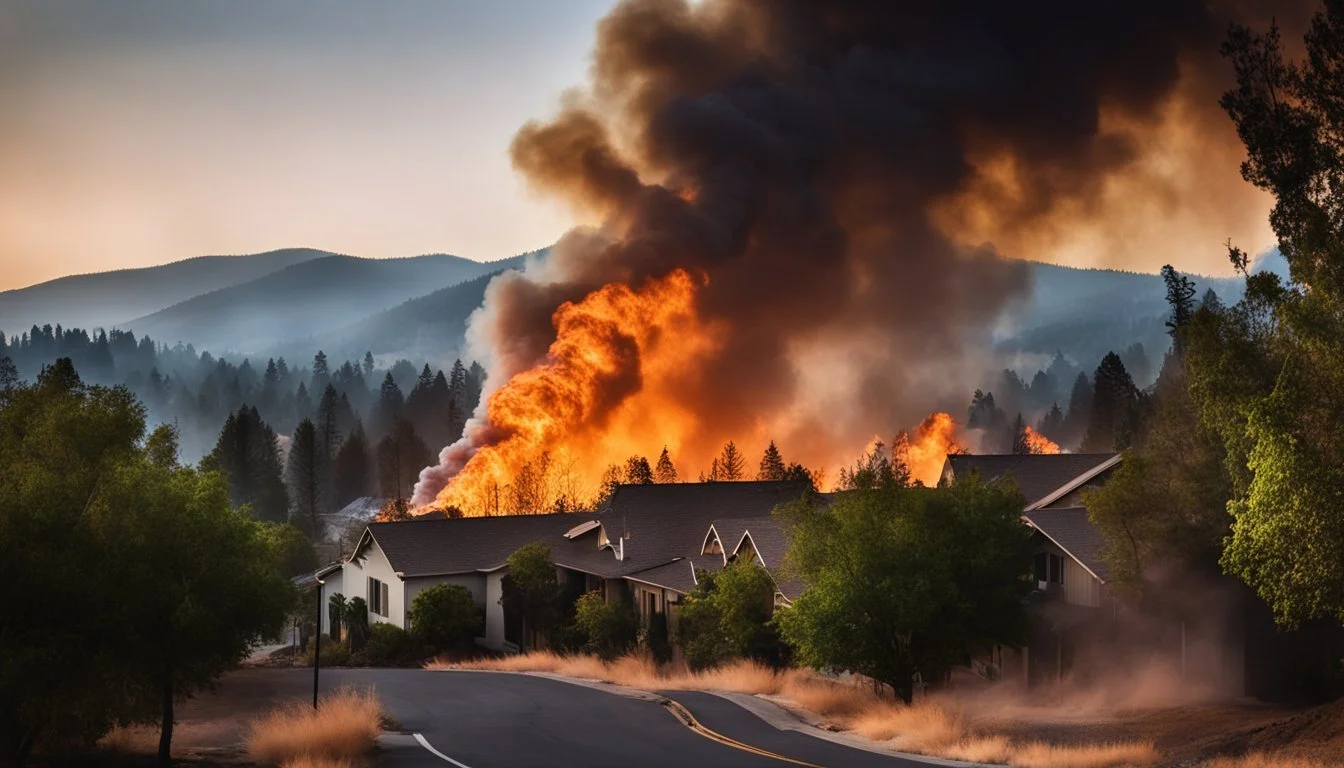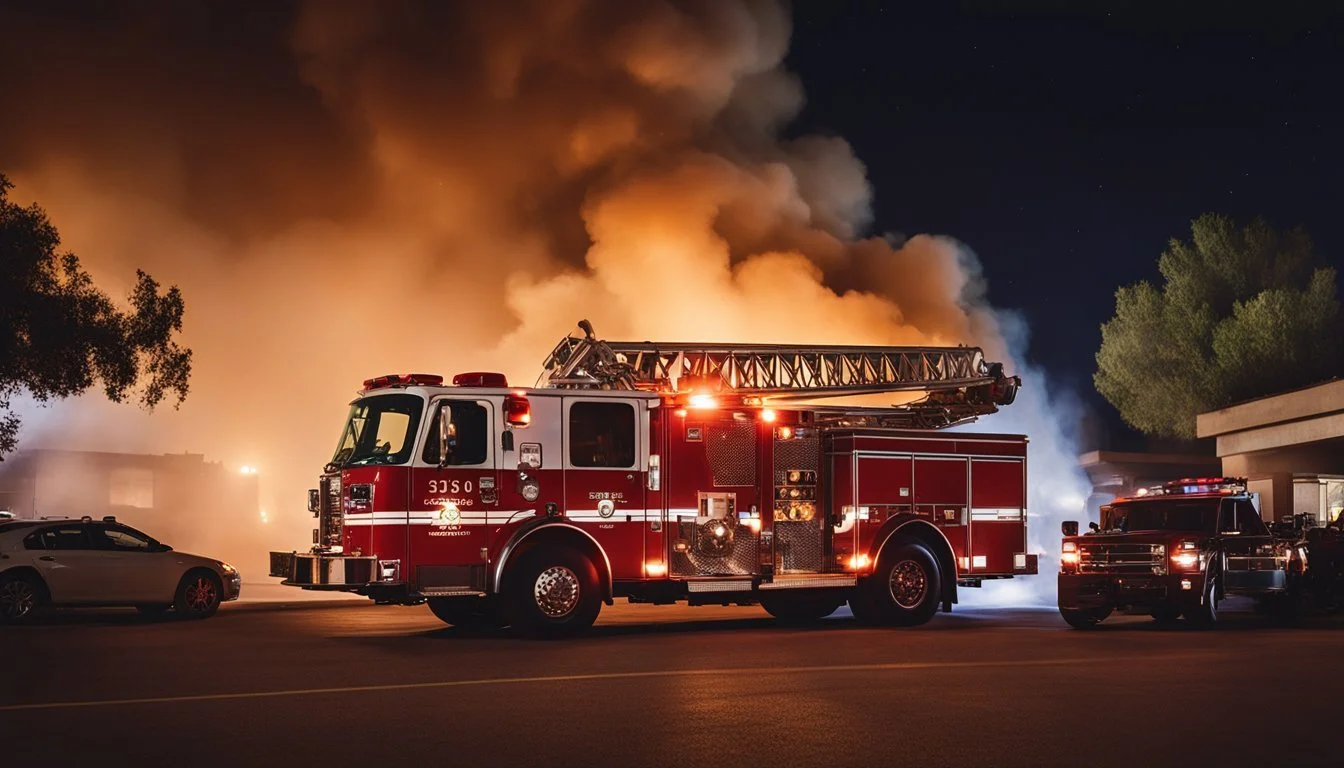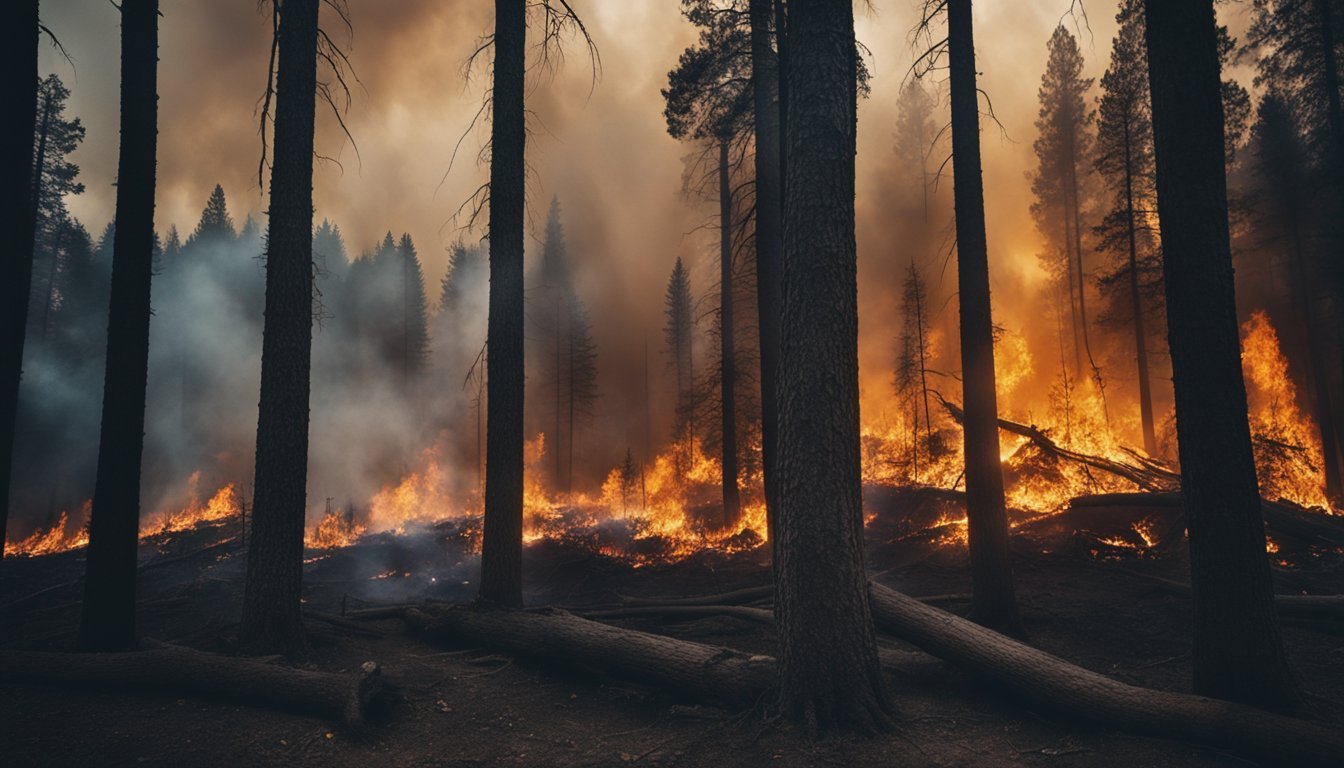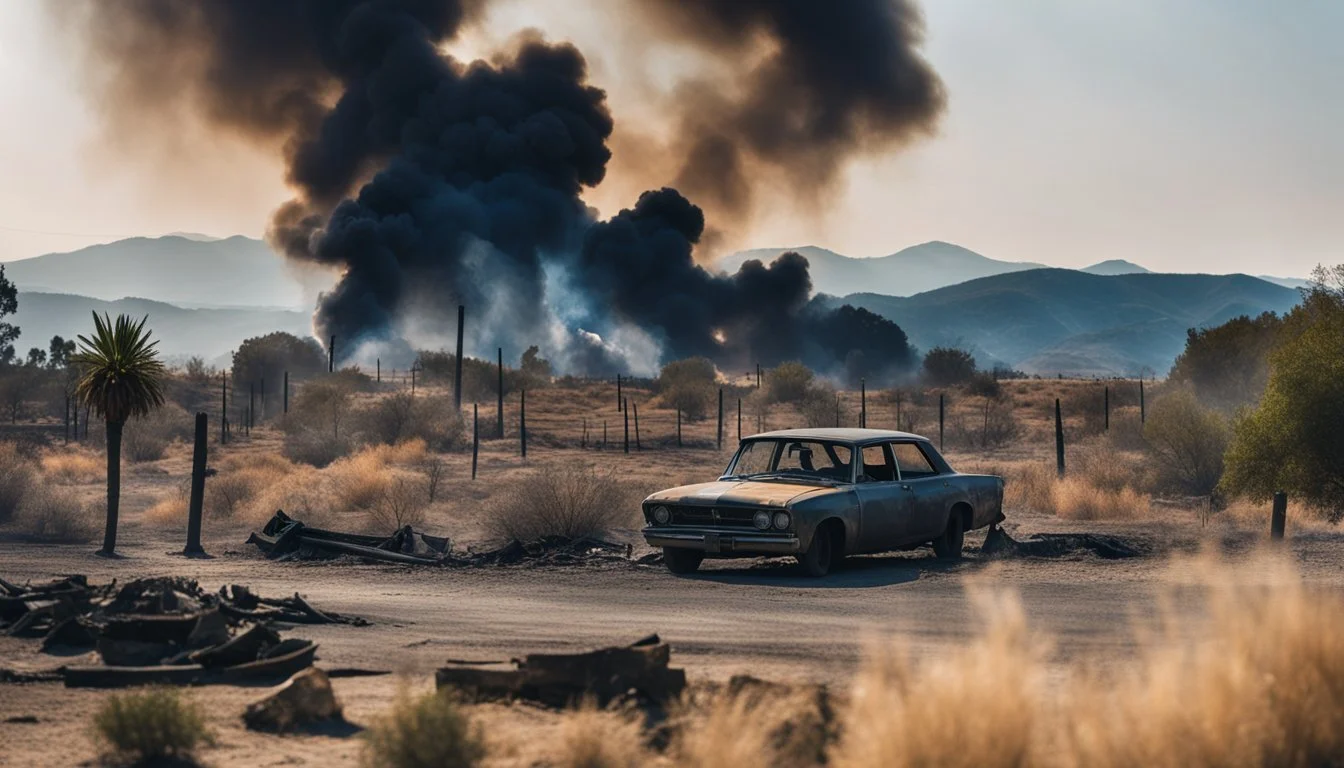8 True Crime Documentaries on Arson in California
Unveiling the Flames
California has a long and troubling history of devastating arson cases, which have not only caused extensive property damage but also claimed numerous lives. These tragic events have inspired a number of true crime documentaries that explore the complexities behind the perpetrators and the investigations leading to their capture. Viewers will gain valuable insights into the motivations and methods of some of California's most notorious arsonists.
With captivating narratives, these documentaries delve into the intricate details of arson crimes, shedding light on the challenges faced by investigators and the impact on communities. These films serve as a compelling window into the darker side of human behavior and the relentless pursuit of justice by law enforcement.
1) Fire in Paradise (2019)
"Fire in Paradise" is a compelling documentary that focuses on the 2018 Camp Fire, the deadliest and most destructive wildfire in California history.
Directed by Zackary Canepari and Drea Cooper, the film follows the harrowing experiences of survivors as they recount the catastrophic events that razed the town of Paradise.
The Camp Fire began on November 8, 2018, and quickly spread, burning an area equivalent to the size of Chicago. It resulted in the destruction of approximately 30,000 homes and claimed the lives of 85 people.
The documentary provides a sobering look at the chaos and devastation wrought by the blaze. It offers personal stories from those who lived through the inferno, painting a vivid picture of survival and loss.
Besides personal accounts, "Fire in Paradise" also examines the response efforts and the failures that contributed to the unprecedented scale of the disaster.
More Information on "Fire in Paradise" (2019)
2) The Devil We Know (2018)
"The Devil We Know" is an investigative documentary made in 2018 by Stephanie Soechtig. It explores the serious health hazards linked to perfluorooctanoic acid (PFOA), commonly known as C8. This chemical, primarily used in manufacturing Teflon, has been associated with a range of severe health issues.
C8 contamination is not localized; it is widespread and affects global populations. The documentary reveals that nearly everyone has C8 in their blood due to its prevalence in various household items. This includes non-stick cookware and stain-resistant fabrics.
The film also sheds light on DuPont’s alleged role in covering up the dangers associated with C8 for decades. It provides a chilling perspective on how powerful corporations can manipulate information and evade accountability.
This documentary serves as an eye-opening narrative on corporate negligence and environmental pollution. It presents evidence and personal testimonies, making the viewer question the safety of common consumer products.
For more detailed information on "The Devil We Know," visit its Wikipedia page.
3) The Arsonist: Monstrous Fire
"The Arsonist: Monstrous Fire" (2022) dives into the chilling story of John Leonard Orr, a former firefighter and arson investigator turned serial arsonist.
Orr is infamously known for setting nearly 2,000 fires in California during his thirty-year spree. His most notorious act was the blaze at Ole’s Home Center in South Pasadena in 1984, which resulted in four deaths.
The documentary explores Orr's dual life as a respected fire captain and a dangerous arsonist. Interviews with former colleagues and investigators provide insight into the investigation that revealed Orr's horrifying secret. The use of forensic science and profiling played a key role in his eventual capture and conviction.
For viewers interested in the intersection of law enforcement and psychological profiling, this film offers a gripping narrative. It uncovers how someone tasked with protecting the public became a monstrous offender, causing widespread fear and destruction.
More about "The Arsonist: Monstrous Fire" can be found here.
4) Wildland: A Journey Through Fire (2019)
"Wildland: A Journey Through Fire" is a gripping documentary that explores the lives of firefighters battling wildfires in California. The film captures the intense and dangerous conditions that these brave individuals face as they risk their lives.
Through captivating footage and personal interviews, the documentary highlights the physical and emotional toll of fighting wildfires. The filmmakers follow several firefighters, providing an in-depth look at their daily challenges.
The documentary also delves into the impact of climate change on the frequency and intensity of wildfires in California. It underscores the importance of understanding and mitigating these devastating natural disasters.
"Wildland: A Journey Through Fire" offers not only a window into the experiences of firefighters but also serves as a poignant reminder of the broader environmental issues at play.
To learn more about the documentary, visit the IMDb page.
5) Catching Hell in the City of Angels (2013)
"Catching Hell in the City of Angels" is a documentary exploring life in South Central Los Angeles. Directed by Andy Baybutt, this film delves into the harsh realities faced by both gang members and the police.
The documentary provides a ground-level view of the ongoing struggles in the community, highlighting the dangers and challenges that define their daily lives. It contrasts with the glamorous image of nearby Hollywood, showing a starkly different California.
The film features interviews with a range of individuals, including community leaders, police officers, and residents. Viewers get an intimate look into their experiences and perspectives.
Offering a raw portrayal of urban life, "Catching Hell in the City of Angels" emphasizes the impact of state intervention in the area, often represented by police sirens rather than support.
For more information on "Catching Hell in the City of Angels," visit IMDb.
6) Trial by Fire: California's Arson Investigation
"Trial by Fire: California's Arson Investigation" focuses on an intense period in the 1980s and early 1990s when California faced a wave of deliberately set fires. One prominent case was that of John Leonard Orr, a fire captain and arson investigator, later revealed to be a prolific serial arsonist.
Orr was convicted of setting nearly 2,000 fires, primarily across Los Angeles, causing extensive damage and loss of life. His fires included the 1984 blaze in South Pasadena, which resulted in four deaths. Investigators nicknamed him the "Pillow Pyro" due to his method of using common household items to ignite flames.
The documentary delves into the investigative efforts to track and convict Orr, shedding light on the meticulous techniques used by fire investigators. It explores the tension within the firefighting community as one of their own was exposed as a dangerous criminal.
"Trial by Fire: California's Arson Investigation" provides an in-depth look at the challenges and breakthroughs in forensic fire investigation, offering viewers a detailed narrative of the pursuit of justice in one of California’s most notorious arson cases. IMDb (2024)
7) California Burning: An Inside Look
"California Burning: An Inside Look" (2019) is a deep dive into the notorious career of John Leonard Orr, one of America's most prolific serial arsonists. Orr, a former fire captain and arson investigator in Glendale, California, was responsible for nearly 2,000 fires across the state.
This documentary sheds light on Orr’s complex dual life. By day, he was a trusted firefighter and arson investigator; by night, the very arsonist he was supposed to be catching.
The film meticulously examines key events, starting with the devastating 1984 fire at Ole's Home Center in South Pasadena that claimed four lives. Through interviews with investigators, firefighters, and survivors, viewers gain insight into the meticulous methods Orr used to set his fires and evade capture.
"California Burning" also explores how Orr's colleagues were initially misled by his apparent sixth sense, believing he had an uncanny ability to predict arson incidents. The documentary uses archival footage and interviews to create a gripping narrative that unravels the mystery behind Orr’s pyromaniac tendencies.
For anyone interested in true crime and forensic investigation, this film offers a compelling and disturbing look into one of the darkest chapters in California's history.
More about "California Burning: An Inside Look" (2019) on IMDB.
8) Blaze: The Horrors of Arson
Blaze: The Horrors of Arson (2022) investigates the dark world of fire-setting crimes in California. This documentary dives into several infamous cases, shedding light on the devastation arson causes.
The film examines the motivations behind these criminal acts. Pyromaniacs, insurance fraudsters, and those committing arson to hide other crimes are all explored.
One of the highlighted cases is a fire that turned into a murder investigation. A woman's body was discovered in a burned-out house near Lake Tahoe. Investigators struggled for years to uncover whether it was an accident or a calculated crime.
Through interviews with law enforcement, psychologists, and survivors, viewers gain insight into the complexities of arson investigations. Experts discuss the challenges in proving arson, especially when evidence is literally up in smoke.
The documentary also touches on the emotional and economic impact on communities. Entire neighborhoods can be displaced, and the cost to rebuild is staggering.
This film provides a comprehensive, yet approachable look into arson, making it a must-watch for true crime enthusiasts.
For more details about "Blaze: The Horrors of Arson," you can visit IMDB.
Understanding Arson: A Criminal Perspective
Arson, a serious criminal act, involves intentionally setting fire to property, leading to substantial property damage and sometimes loss of life. This section will explore the legal definitions and common motivations behind arson.
Legal Definitions of Arson
Under California Penal Code 451, arson is defined as the willful and malicious act of setting fire to any structure, forest land, or property.
To secure a conviction, prosecutors must prove:
Intent to set fire
Malicious intent
Act resulted in burning
Different degrees of arson depend on factors like:
Type of property involved
Whether the act endangered human life
Prior criminal history of the accused
Convictions can lead to severe penalties, including long prison sentences and hefty fines. Arson laws also encompass aiding or abetting the crime, adding further legal implications.
Motivations Behind Arson
Arsonists may be driven by a range of motives, including financial gain, revenge, and psychological factors.
Common motivations include:
Financial Gain: Insurance fraud by destroying property for claims.
Revenge: Setting fire to property as an act of retribution.
Psychological Disorders: Some may suffer from pyromania, experiencing an uncontrollable urge to set fires.
Vandalism: Particularly among juveniles, to cause destruction or out of boredom.
Understanding these motivations is critical for law enforcement and mental health professionals to address the causes and prevent future incidents.
Historical Context of Arson in California
California has faced numerous instances of arson that have both dramatically shaped its history and severely impacted its communities. Notable cases highlight the dangerous and destructive potential of arson, while the fallout from these events underscores the deep and long-lasting effects on affected areas.
Notable Arson Cases
In October 1984, a significant fire at Ole's Home Centre in South Pasadena resulted in the deaths of four individuals. John Orr, an arson investigator, believed the fire was intentional, despite initial theories suggesting it was an electrical fire. Orr's insistence eventually led to the uncovering of his own involvement as the arsonist. He was later identified as one of America's most prolific serial arsonists, responsible for numerous fires using time delay incendiary devices.
Another key case occurred in 1989, where multiple arson events along California's central coast mirrored Orr's methods. These incidents were highly destructive, causing significant property damage and loss. These cases illustrate the severe threat posed by individuals with knowledge of fire-setting techniques and the immense challenges faced by investigators.
Impact on Communities
The impact of these arson cases on California communities has been profound. The loss of lives and property has left enduring scars. In particular, the Ole's Home Centre fire caused widespread fear and grief, leading to increased awareness and preventative measures against arson.
Communities affected by arson often face long-term economic struggles as businesses and residents work to rebuild. The psychological toll is also immense, with survivors grappling with trauma and loss. These events highlight the need for robust arson prevention and community support strategies to mitigate future incidents and aid recovery efforts.
Psychological Profiles of Arsonists
Arsonists often exhibit unique behavioral patterns and psychiatric tendencies that distinguish them from other violent offenders. Understanding these traits can provide insights into their motivations and actions.
Behavioral Patterns
Arsonists typically display a range of behaviors that can indicate their propensity for setting fires. They often show a fascination with fire from a young age. Some may even collect firefighting equipment or memorabilia.
Many arsonists are socially isolated and lack effective coping mechanisms. This isolation can lead them to use fire-setting as a way to gain attention or express frustration. In certain cases, arsonists derive sexual gratification from the act of setting fires, a condition known as pyromania.
Repeating patterns are common among serial arsonists. For instance, they might target similar types of locations or use consistent methods to ignite fires. This consistent behavior can assist investigators in identifying and profiling them.
Psychiatric Evaluation
Psychiatric evaluations reveal that many arsonists suffer from various mental health issues. Depression and anxiety are common, and some individuals may struggle with personality disorders. Additionally, the prevalence of suicidal tendencies is notably higher in this group compared to the general population.
Some arsonists exhibit traits of antisocial personality disorder, which includes a disregard for societal norms and the rights of others. Others might have a history of childhood trauma or abuse, which can contribute to their criminal behavior.
Understanding these psychiatric factors is crucial for both prevention and rehabilitation efforts. Mental health interventions can sometimes help mitigate the risk of reoffending by addressing the root psychological issues.









